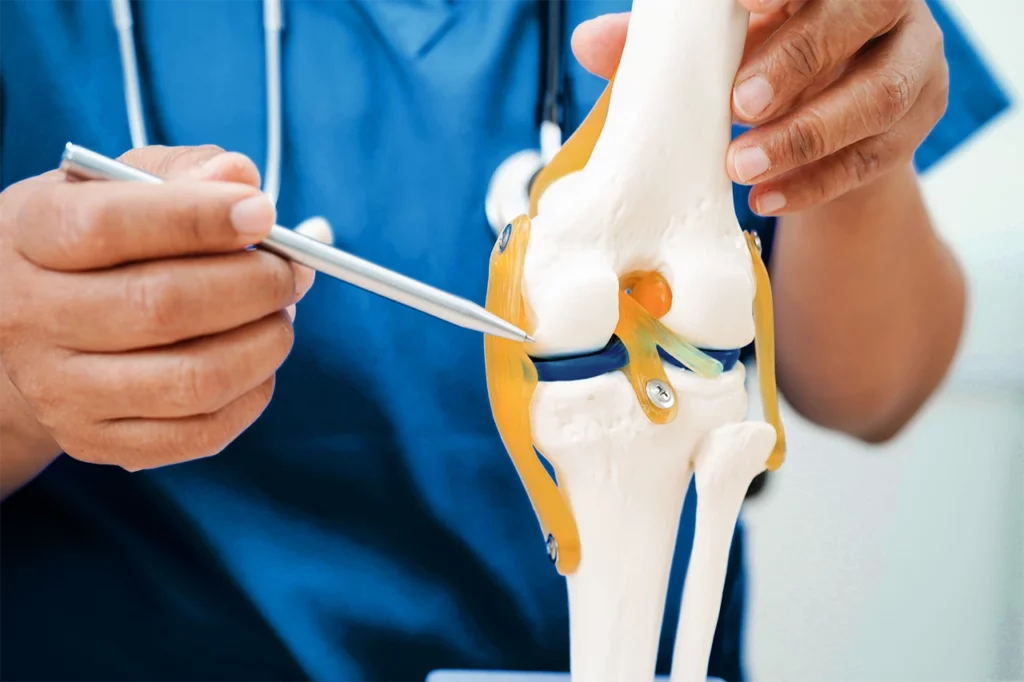One of the most common causes of disability in older adults is osteoarthritis, which is a chronic degenerative condition that affects the joints, especially the knees, hips, hands, and spine.
This condition occurs when the cartilage that covers the joints progressively wears down, eventually causing the bones to rub against each other.
The wear and tear can cause pain, inflammation, and reduced joint mobility. Although older adults are the population most affected by this condition, younger people may also be affected, especially if they have had joint injuries or genetic risk factors.
The progression of osteoarthritis is slow and gradual, initially with mild symptoms, but it can become debilitating and affect the patient’s quality of life.
Symptoms of osteoarthritis
The symptoms of osteoarthritis can vary in severity, but the most common include:
- Joint pain: the most characteristic symptom of osteoarthritis; this pain usually appears when using the affected joint or afterward, for example, when walking, climbing stairs, or performing repetitive tasks.
- Stiffness: morning stiffness or stiffness after long periods of inactivity is an early sign of osteoarthritis. This stiffness usually improves with movement.
- Inflammation: this sign is less common compared to other joint diseases, but it can still occur.
- Loss of flexibility: as the condition progresses, joint mobility decreases, making everyday movements difficult.
- Grinding sensation: the friction between bones may cause a sensation or sound of grinding when moving the joint. This happens due to cartilage wear.
- Joint deformity: joints may suffer deformities due to structural deterioration.
It is important to note that symptoms are not always correlated with the degree of wear observed in imaging studies. Some people with advanced osteoarthritis may experience few symptoms, while others with early signs may report significant pain.
Osteoarthritis treatment
The osteoarthritis treatment focuses on relieving symptoms, improving joint function, and slowing disease progression. Various therapeutic options are used for this purpose.
Non-pharmacological treatments include low-impact physical activity, reducing excess body weight, performing physiotherapy exercises, and, in some cases, using assistive devices such as orthopedic insoles, canes, or knee braces.
Pharmacological treatment may include the use of pain relievers, anti-inflammatories, intra-articular injections, or supplements to support cartilage health.
In severe cases of osteoarthritis, when conservative treatments are ineffective, surgical procedures may be used, such as arthroscopy to clean the joint and remove cartilage fragments, osteotomy to realign bones and relieve joint load, or joint replacement to substitute the damaged joint with a prosthesis.
Osteoarthritis and osteoarthrosis
It is common to hear the terms osteoarthritis and osteoarthrosis used interchangeably, which causes confusion. Both terms refer to the same disease, but there are some differences.
While the term osteoarthritis implies the presence of joint inflammation, the term osteoarthrosis emphasizes the mechanical and degenerative wear of the joint, without necessarily implying an inflammatory process.
However, in clinical practice, both terms refer to the same condition, and their differences are mainly semantic.
Osteoarthritis is a complex disease that affects millions of people worldwide. Understanding what osteoarthritis is and its symptoms allows early intervention, which is key to improving the quality of life of those who live with it.
At the ABC Medical Center’s Orthopedics and Traumatology Center, we can provide you with specialized care. Contact us!
Fuentes
NIH, Secretaría de Salud, Cigna



